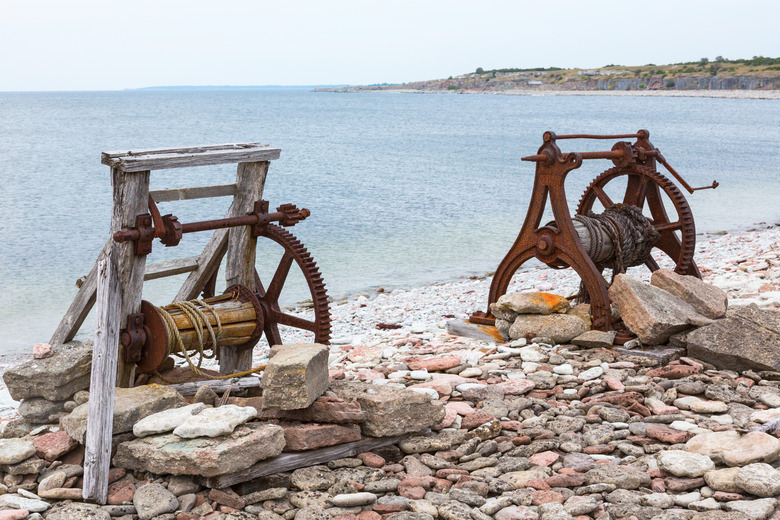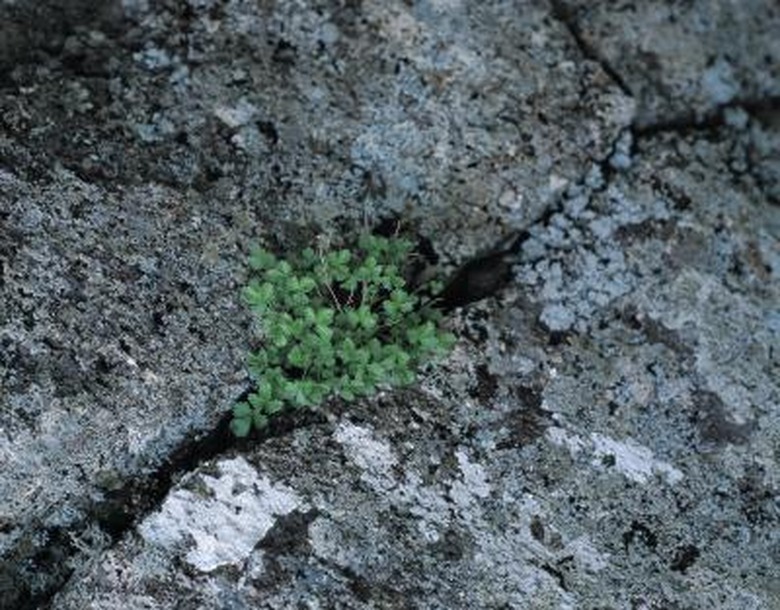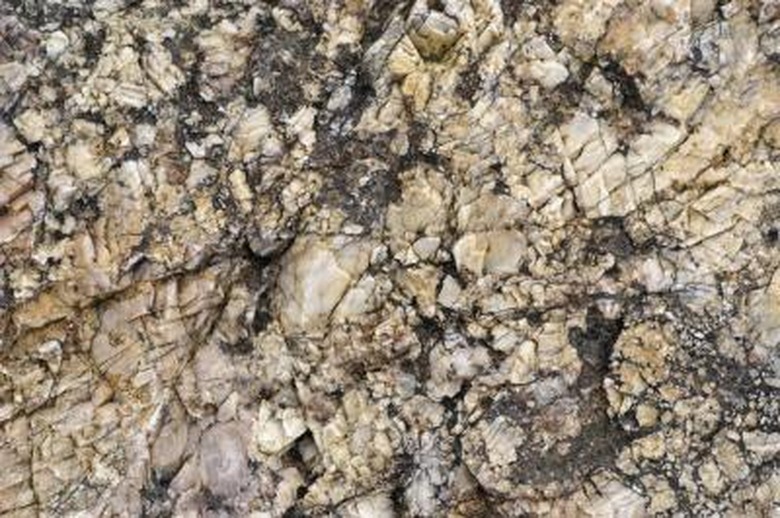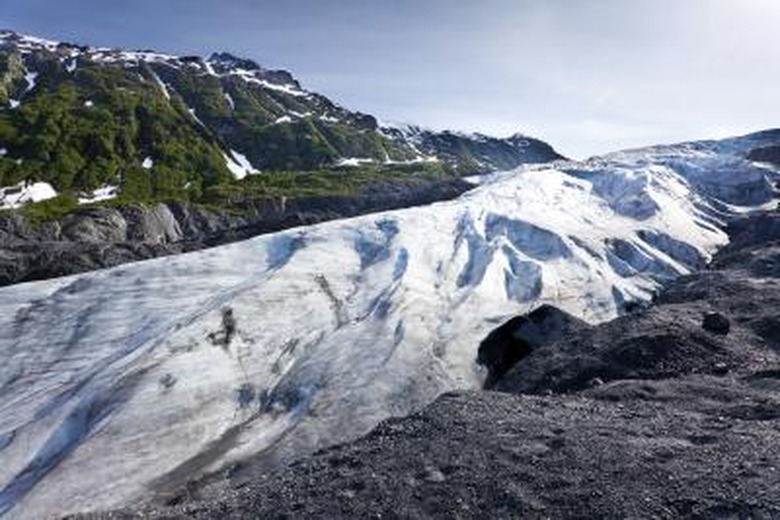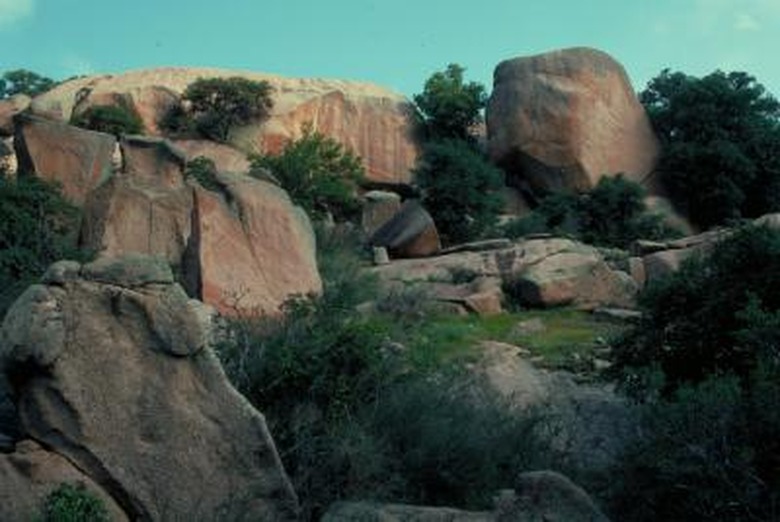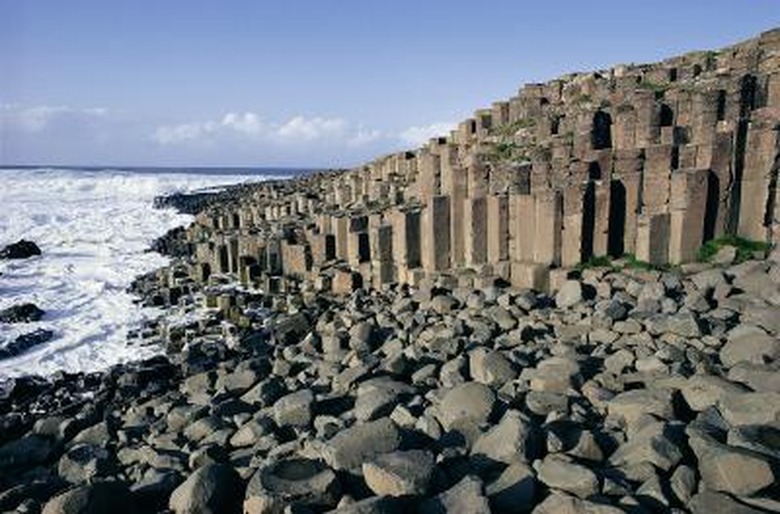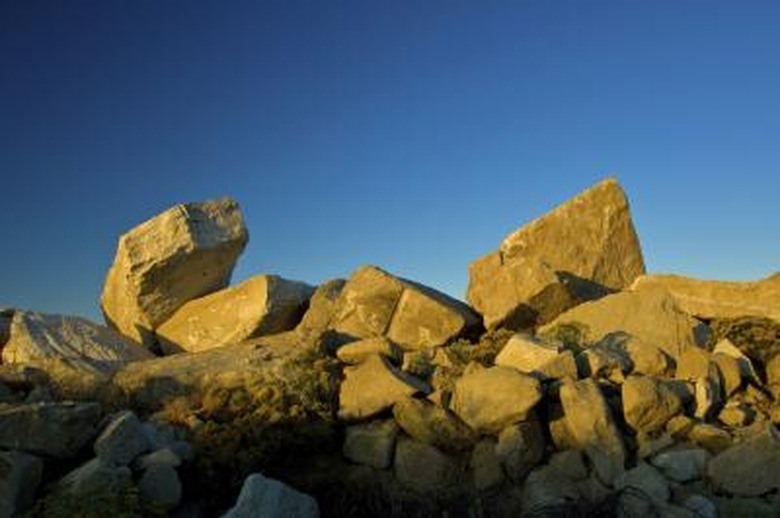Types Of Mechanical Weathering
Types of mechanical weathering, also called physical weathering, fall into two primary categories: fracturing and abrasion. It's often also related to other kinds of weathering: like biological weathering – which includes the wedging-apart of rocks by plant roots and lichen – and chemical weathering which often participates with mechanical weathering to hasten erosion processes.
The composition of the rock and geological surfaces that experience weathering and erosion plays a large role in the form of mechanical weathering and the actual breakdown of rocks. As metamorphic and igneous rocks are broken down by processes of mechanical weathering, they turn into small pebbles, rock fragments, and dirt that can then accumulate to form sedimentary rocks.
TL;DR (Too Long; Didn't Read)
In earth science, we often divide different types of mechanical weathering into two major categories: **fracturing**, which includes frost- & salt-wedging, and **abrasion**, including sandblasting and sea salt weathering.Frost Wedging or Freeze-Thaw
Frost Wedging/Ice Wedging or Freeze-Thaw
Frost Wedging/Ice Wedging or Freeze-Thaw
Water expands by 9 percent when it freezes into ice. As it expands, it exerts up to 4.3 million pounds per square foot of pressure, enough to open cracks and fissures in rocks. When water freezes and thaws repeatedly, it allows water to seep deeper into these crevices and enlarge them. Cracks may also allow entry of roots, agents of biological weathering that can also pry apart rock by burrowing into smaller gaps.
Crystal Formation or Salt Wedging
Crystal Formation or Salt Wedging
Crystal formation cracks rock in a similar way. Most water contains dissolved salts. When water in rock fissures evaporates, salt crystals form that, like ice, can force open fissures. This "salt wedging" tends to be most pronounced in arid regions given the high evaporation rates; it also occurs along seacoasts.
Unloading and Exfoliation
Unloading and Exfoliation
Granitic rocks formed by cooling magma underground and later exposed by uplift and erosion may "exfoliate": The release of pressure causes strips or sheets of rock to peel away. Rock once compressed under the weight of glaciers may also exfoliate due to unloading: When the glacier finally melts – for example, at the start of an interglacial period – the rock expands from the reduction of pressure. This causes fracturing between the layers parallel to the Earth's surface. The top layer breaks apart in sheets, having no load above it at all. As the rock below is exposed, it too exfoliates.
Thermal Expansion and Contraction
Thermal Expansion and Contraction
Heating causes rock to expand. Cooling causes it to contract. The resulting cracking looks similar to frost wedging, though it tends to take a much longer time. Areas with extreme swings in daily temperature may see higher rates of this kind of wear, and arid locations with very high temperatures might experience thermal expansion cracking in the surface of the Earth. The moon has almost no atmosphere and no tectonic activity to weather the rock, so thermal expansion and contraction may therefore be the only form of weathering that occurs (the temperature variation between day and night is 280 degrees C/536 degrees F).
Not all rocks respond the same way to temperature changes and contraction, but surrounding rock around points of significant expansion or contraction will often experience similar results.
TL;DR (Too Long; Didn't Read)
Freeze-thaw cycles are common sources of these drastic temperature swings, but the difference between day and night temperatures in desert regions can lead to similar thermal expansion and contraction cycles.
Rock Abrasion
Rock Abrasion
In dry regions, wind-driven sand abrades exposed rock in a natural form of sandblasting. In streams, rivers and ocean surf, water turbulence causes particles of rock to collide with one another and grind against larger bodies of rock: abrasion that ultimately whittles them into smaller particles. Boulders, stones and grit embedded in glaciers also abrade the rock surfaces over which the ice flows.
Gravitational Impact
Gravitational Impact
Rocks toppling off cliffs or steep slopes due to the tug of gravity or swept up in landslides split into smaller pieces, another form of physical weathering by abrasion and impact. The actual gravitational transport of rocks and sediments is known as mass wasting, which isn't itself a form of weathering but rather a process by which weathered material moves from one place to another.
Cite This Article
MLA
Dohrman, Paul. "Types Of Mechanical Weathering" sciencing.com, https://www.sciencing.com/types-mechanical-weathering-5417392/. 8 July 2023.
APA
Dohrman, Paul. (2023, July 8). Types Of Mechanical Weathering. sciencing.com. Retrieved from https://www.sciencing.com/types-mechanical-weathering-5417392/
Chicago
Dohrman, Paul. Types Of Mechanical Weathering last modified July 8, 2023. https://www.sciencing.com/types-mechanical-weathering-5417392/
